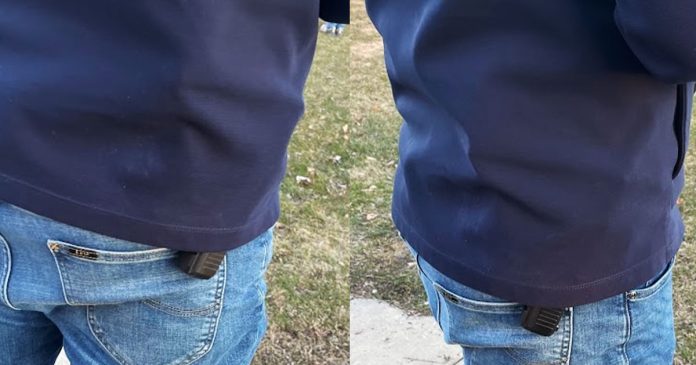Listed To This Article: Play in new window | Download | Embed
You can also subscribe via Apple Podcasts | Spotify | Amazon Music | Android | | More
ALLENDALE, MI — A recent incident at Grand Valley State University (GVSU) involving Ottawa County Commissioner Joe Moss has brought renewed attention to Michigan’s campus firearm policies, the enforcement limits of “gun-free zones,” and the responsibilities that come with concealed carry—especially when entering restricted locations.
According to reporting by The Lanthorn, Moss was on GVSU’s Allendale campus on March 17, 2025, attending a Turning Point USA event featuring speaker Chloe Cole. During the event, multiple reports were made to university staff and campus police that Moss was carrying a concealed firearm—potentially in violation of
GVSU’s internal Weapons Policy, which prohibits firearms on university property except for law enforcement or authorized individuals.
Witnesses reported seeing what they believed to be a firearm visible under Moss’s jacket near his right hip. Several individuals took photos, time-stamped between 7:08 and 7:21 p.m., showing what appears to be the barrel of a handgun protruding beneath the bottom of his sweater. The outline of the firearm was also clearly visible, suggesting Moss was carrying in an outside-the-waistband (OWB) holster that was not adequately concealed.
Despite three separate reports, Moss remained on campus for more than 30 minutes before a university administrator approached him. He left without incident. Interim GVPD Chief Leah Heaton stated that officers responded within 16 minutes of the final report and that a non-emergency response was appropriate due to the absence of any direct threat.
While Michigan law prohibits concealed carry in dormitories and classrooms, it does not outlaw it on other parts of public college campuses. Universities like GVSU often implement broader no-firearm policies internally, but such rules do not carry the weight of criminal law. Instead, they are enforced administratively—typically by asking the person to leave, and if they refuse, issuing a trespass order.
This is an important distinction for CPL holders to understand. In states like Michigan—and others where “no firearms allowed” signs are not legally binding—carrying in a restricted location is not automatically a crime. However, if you are discovered and asked to leave, refusal to comply becomes trespassing, which is a criminal offense.
That means the burden is on the individual carrying: if you choose to carry in such a place, you must ensure your firearm is actually concealed. As this incident shows, failing to do so not only draws public attention but can also create confusion and alarm, especially in sensitive environments like college campuses.
Moss had previously posted a photo of a Glock 17 on his X account on March 19, 2024, nearly a year before the campus event, with the caption: “It’s not always easy to conceal a full-size (Glock G17), but it’s a wonderful firearm!” Although unrelated to this incident, the post has resurfaced in light of the photos from March 17, in which the firearm was not fully concealed. It hasn’t aged well.
GVSU considers the matter closed. However, critics have pointed to the incident as an example of why policy-based gun bans can be ineffective. Witnesses expressed concern over the delay in response, and some questioned whether university procedures are clearly understood by students, staff, and even security personnel.
This comes as the U.S. Supreme Court is reviewing Wade v. University of Michigan, a case challenging the legality of university-imposed firearm bans. Legal experts argue that many institutions may lack solid legal standing for such policies, especially when state law does not expressly support them.
For concealed carriers, the incident is a strong reminder: know your state’s laws, understand the difference between policy and statute, and if you’re going to carry in a place where it’s not permitted by policy—but not criminally prohibited—your concealment must be effective. If not, you may find yourself in a legally vulnerable position, or worse, create unnecessary panic in the community.
Read the full article here


